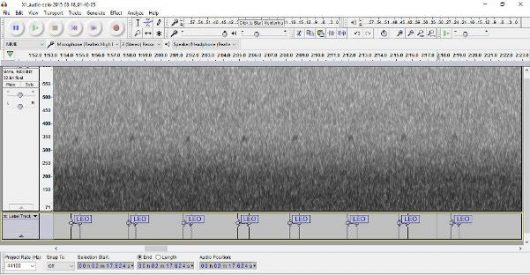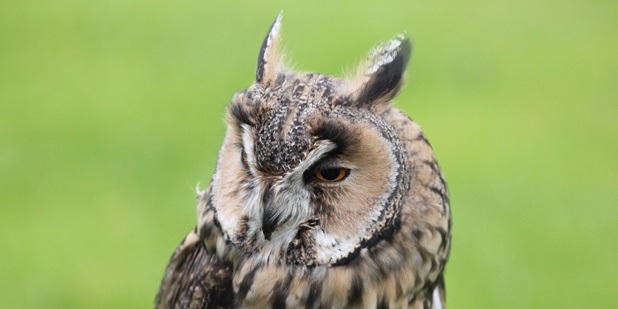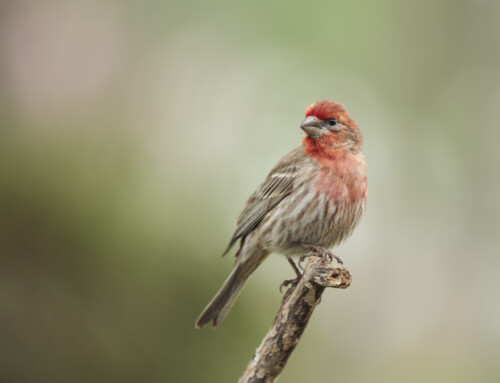Inexpensive tool could provide new insights into avian ecology
LINKED PAPER
Solo: an open source, customizable and inexpensive audio recorder for bioacoustic research. Whytock, R.C. & Christie, J. 2016. Methods in Ecology and Evolution. DOI: 10.1111/2041-210X.12678. VIEW
One of the biggest challenges facing ornithologists is that it can be extremely difficult to observe most birds in their natural environment over sufficiently long time periods and at representative spatial scales. However, technological advances such as GPS tracking, camera traps and audio recording technology have made the impossible possible, and the movement and behaviour of many birds can now be studied in incredibly fine detail.
What can we learn from sound?
Bird songs and calls convey a wealth of ecological and biological information about the source individual. For example, several species can only reliably be identified by their songs or calls, and in some species individuals can even be identified by their unique song structure (Petrusková et al. 2015). For elusive or nocturnal species, often the most reliable indicator of a species’ presence is hearing its song or call, such as the Long-eared Owl Asio otus (top right). Audio recorders have therefore become an essential tool for many ornithologists.

Audio technology and its use in ornithology
Audio technology has advanced significantly during the last 20 years following the digital revolution, and there are now several commercially available ‘passive acoustic monitoring’ (PAM) systems that are suitable for ornithological research. A typical PAM system comprises a microphone, a simple computer, a memory card and a battery enclosed in a weatherproof case. The unit is usually deployed in the field for long periods and scheduled to record audio at pre-set intervals, for example to capture bird song during the dawn chorus.
Commercial PAM systems have been instrumental in advancing our understanding of bird behaviour and ecology in the past decade. Nonetheless, most commercial systems are relatively expensive and are rarely user serviceable or easily customised. These factors have limited the use of audio recorders in certain settings. For example, dozens of systems might be required for large, landscape-scale bird studies, where the cost of commercial systems can become prohibitive.
‘Citizen scientists’ have also become a fundamental part of many large-scale and long-term ornithological research projects, and the availability of affordable equipment is key to maximising participation.
Developing the Solo audio recorder
Limited funding and the need for a customisable, user-serviceable system led us to create the Solo audio recorder (Fig 2). We took advantage of the inexpensive and widely available Raspberry Pi computer, which was originally designed for educational purposes but has since been adapted for a huge variety of applications (a great list is available here).

To date we have used Solos to survey Long-eared Owls in collaboration with the British Trust for Ornithology and to simultaneously record migratory bird arrival times in 30 woodlands spread across the UK as part of the Woodland Creation and Ecological Networks research project.
Opportunities and challenges
Although collecting large quantities of audio data has become relatively straightforward, there are still challenges that potentially limit the success of acoustic research in ornithology. The two greatest challenges are firstly storing large volumes of data and secondly analysing thousands of hours of audio. Data storage is becoming less of a problem as memory technology becomes cheaper. However, despite several recent advances, automated audio analysis is not always straightforward. The simplest, manual method is to visually analyse the data using spectrograms (e.g. using free software such as Audacity; Fig 1), but this can be extremely time consuming. Free tools are also available for performing automated analysis, such as Arbimon, but in our experience these give mixed results depending on the species of interest.
Automated audio analysis is a rapidly developing area of research, however, and the use of advanced machine learning algorithms like those used for speech recognition (think Apple’s Siri) will no doubt revolutionise automated audio analysis in the near future (Jahn et al. 2017).
So you want to build a Solo?
Instructions for building the Solo system are given in the open-source paper, with an accompanying website and video tutorial (see below). For the example configuration shown in the manuscript some components have subsequently become difficult to get hold of, but we hope this is temporary. Nonetheless, the system’s flexibility means that we have already been able to release a simple solution (see website), demonstrating the advantages of open-source technology.
Video Solo audio recorder: introduction, anatomy and assembly
Our hope is that by making the Solo open source and the software freely available it will firstly allow researchers to achieve much larger sample sizes than would previously have been possible given the cost of commercial systems, and secondly we hope that it improves access to state-of-the-art technology for citizen scientists and others with limited financial resources, such as ecologists and conservationists working in developing countries.
Reference
Jahn, O., Ganchev, T.D., Marques, M.I. & Schuchmann, K.L. 2017. Automated Sound Recognition Provides Insights into the Behavioral Ecology of a Tropical Bird. PloS One, 12(1), p.e0169041. VIEW
Petrusková, T., Pišvejcová, I., Kinštová, A., Brinke, T. & Petrusek, A. 2015. Repertoire‐based individual acoustic monitoring of a migratory passerine bird with complex song as an efficient tool for tracking territorial dynamics and annual return rates. Methods in Ecology and Evolution 7(3): 274–284. VIEW
Image credit
Featured image: Long-eared Owl Asio otus | Ciaran Lee | CC BY-SA 2.0
If you want to write about your research in #theBOUblog, then please see here.





